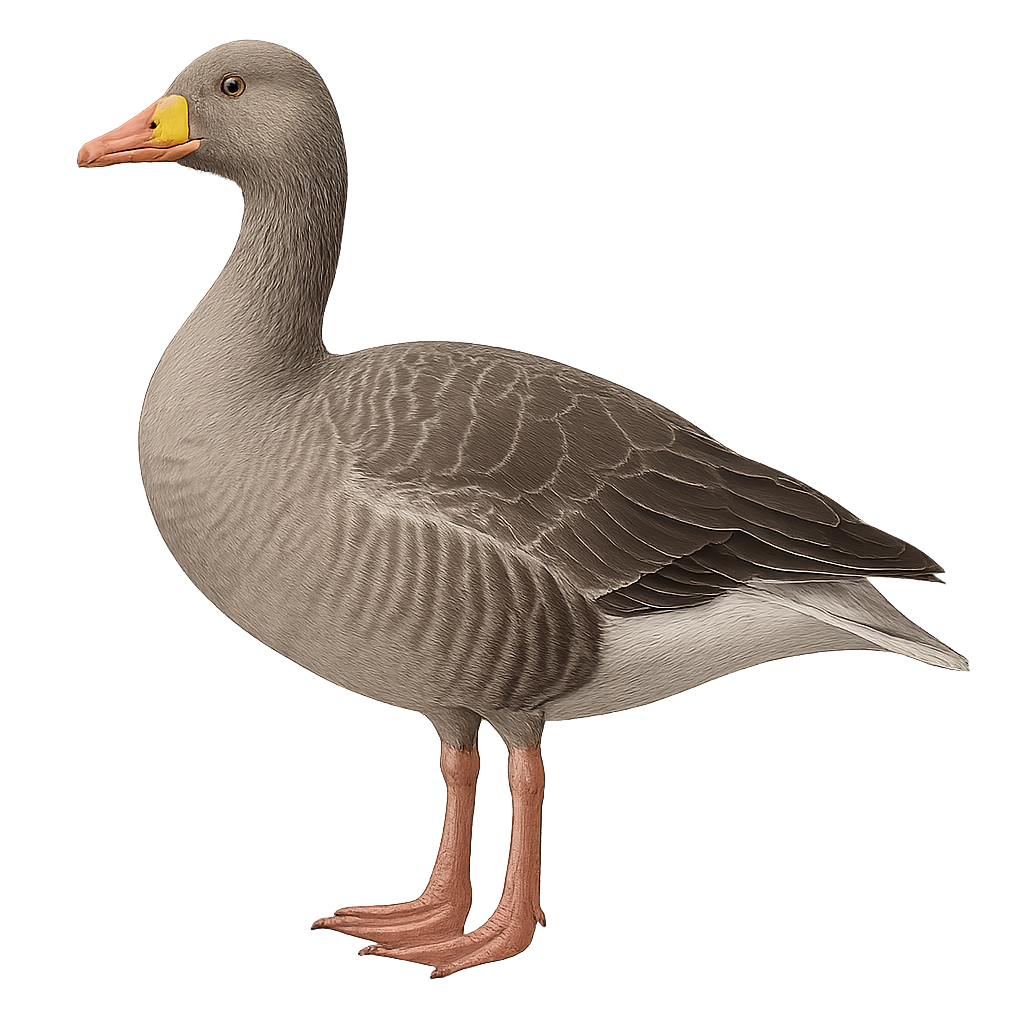Your wildlife photography guide.
Explore the greylag goose in detail, study its behavior, prepare your shots.
Where to observe and photograph the greylag goose in the wild
Learn where and when to spot the greylag goose in the wild, how to identify the species based on distinctive features, and what natural environments it inhabits. The WildlifePhotographer app offers tailored photography tips that reflect the greylag goose’s behavior, helping you capture better wildlife images. Explore the full species profile for key information including description, habitat, active periods, and approach techniques.
Greylag goose
Scientific name: Anser anser

IUCN Status: Least Concern
Family: ANATIDAE
Group: Birds
Sensitivity to human approach: Very shy
Minimum approach distance: 30 m
Courtship display: March to April
Incubation: 27-29 jours
Hatchings: April to May
Habitat:
freshwater wetlands, floodplain meadows and lakes
Activity period :
Primarily active during the day, with peak activity in the morning and late afternoon.
Identification and description:
The greylag goose (Anser anser) is a large migratory waterfowl (75–90 cm in length, 130–160 cm wingspan), distinguished by its smoky-grey plumage, orange bill and pink legs. Found across freshwater wetlands, floodplain meadows and lakes of Europe and Asia, it feeds on grasses, aquatic seeds and mollusks. Highly social, it forms large flocks during migration and wintering. Breeding begins in late February when monogamous pairs perform head-bobbing displays and honking calls. The female lays 5–7 eggs in a ground nest lined with vegetation near water, which incubate for 26–28 days. Precocial goslings leave the nest soon after hatching, grazing and seeking cover alongside parents. In flight, geese famously adopt V formations to conserve energy on long-distance migrations.
Recommended lens:
400 mm – adjust based on distance, desired framing (portrait or habitat), and approach conditions.
Photography tips:
To photograph the greylag goose, position yourself low near feeding grounds at dawn or dusk for warm, directional light. Use a 400–600 mm telephoto lens on a monopod to minimize shake, and set aperture to f/8–f/11 for adequate depth of field. Select a shutter speed of at least 1/1000 s to freeze walking or flying movements. Engage continuous autofocus (AF-C) tracking, and shoot in RAW to maximize post-processing flexibility and recover details in highlights and shadows.
The WildlifePhotographer App is coming soon!
Be the first to explore the best nature spots, track rutting seasons, log your observations, and observe more wildlife.
Already 1 431 wildlife lovers subscribed worldwide

